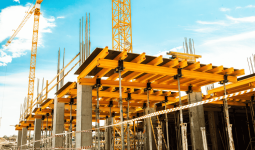There are many different types of metal roofing materials for your building.
Metal roofing offers homeowners various benefits, including inexpensive maintenance and a long lifespan.
However, there are more metal roofing materials and panel styles than you may know if you want a metal roof. As a result, it isn’t easy to comprehend all your possibilities.
When choosing the suitable metal roofing material for your business, you must be aware of the benefits and drawbacks of the many options offered by various current roofing firms.
Zinc, copper, lead, stainless steel, and aluminum are the most common metal roofing materials.
Many metal roofing kinds allow you to customize your roof according to your desired style, durability, and pricing.
These roofing materials suit various modern industrial, commercial, and residential structures.
Here’s more information about each metal roofing material to help you determine which is ideal for your roof.
Without boring you, these are the different types of metal roofing based on the materials used.
1. Aluminum Roofing
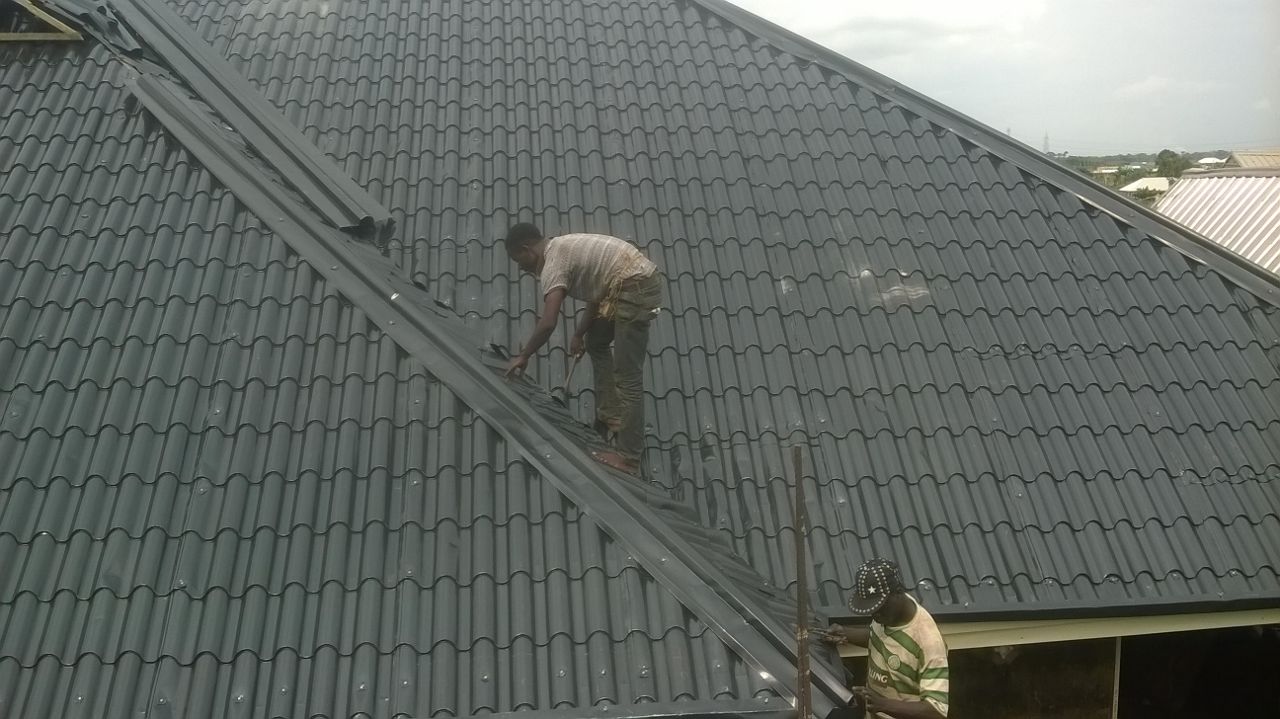
Aluminum roofing is a popular choice for many homeowners due to its lightweight nature and excellent resistance to corrosion.
Unlike steel, aluminum does not rust, making it an ideal option for coastal areas or regions with high humidity.
It is also highly reflective, which can help reduce energy costs by reflecting more of the sun’s rays away from the home.
Pros:
- Corrosion Resistance: Aluminum is naturally resistant to rust, making it durable in wet climates.
- Lightweight: Easier to install and less structural stress on the building.
- Energy Efficient: Reflects sunlight, reducing cooling costs in hot climates.
Cons:
- Cost: Generally more expensive than steel.
- Softness: More prone to denting and damage from hail or falling debris.
- Color Fading: Over time, the color of aluminum roofing can fade, requiring repainting or replacement.
Overall, aluminum roofing is a great choice for those looking for a durable, lightweight, and energy-efficient option, particularly in environments where corrosion is a concern.
2. Stainless Steel Roofing
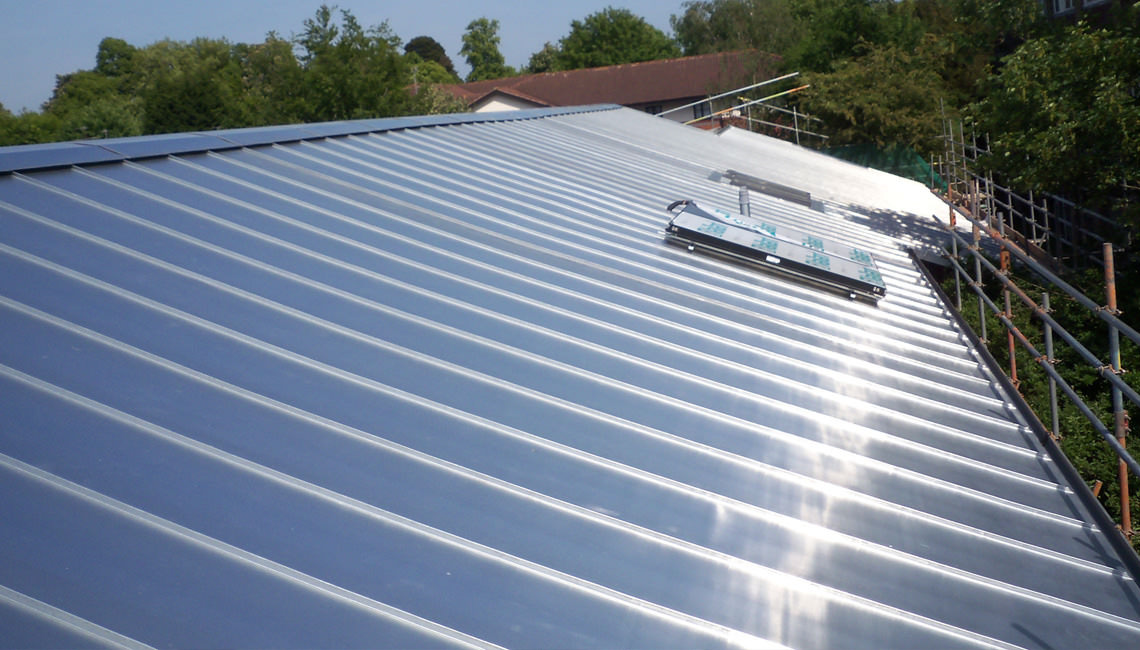
Steel is one of the most common metal roofing materials because of its inexpensive cost and excellent strength.
Steel has a longer lifespan, is more durable, environmentally friendly, and cheaper in the long term. Its only drawback is that it can rust.
Thus, producers typically coat it with zinc or zinc-aluminum anti-corrosive coating.
Stainless steel roofing is an excellent alternative for use in schools, churches, homes, and businesses.
Also, if you live in an area with a high theft rate, it is a decent substitute for lead.
Pros:
- Durability: Extremely strong and can withstand harsh weather conditions.
- Corrosion Resistance: Highly resistant to rust and corrosion, making it suitable for coastal and industrial environments.
- Low Maintenance: Requires minimal upkeep compared to other roofing materials.
- Energy Efficiency: Reflects sunlight, helping to reduce cooling costs in warmer climates.
Cons:
- Cost: More expensive than some other metal roofing options.
- Weight: Heavier than aluminum, which may require additional structural support.
- Expansion and Contraction: This can expand and contract with temperature changes, potentially causing stress on the roofing system if not properly installed.
Stainless steel roofing is an excellent choice for those seeking a durable, low-maintenance, and energy-efficient roofing solution despite its higher cost and weight considerations.
3. Copper Roofing
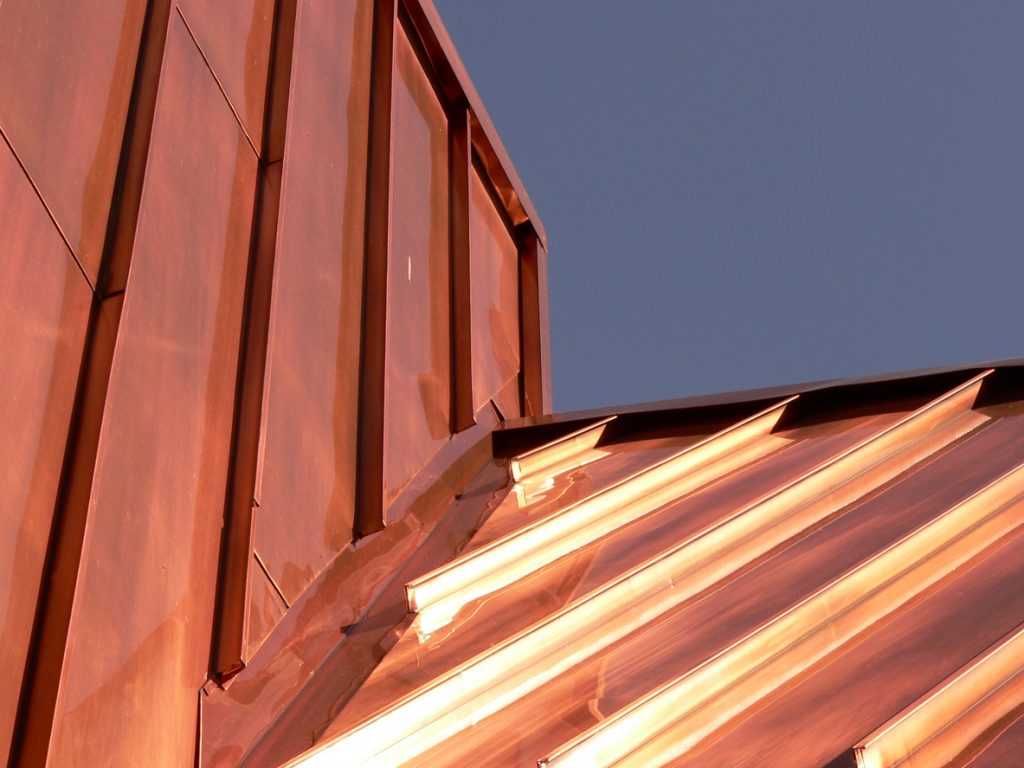
Copper is an excellent metal roofing material because it is pliable, attractive, and soft.
It is naturally corrosion-resistant and does not require any additional coating.
Because its small weight provides less structural stress on the building, although it is somewhat heavier than stainless steel in the gauge utilized, it’s an excellent choice for locations that regularly get a lot of snow.
Copper roofs are durable, lasting up to 50 years with proper maintenance and repair.
Also, it is fire, mildew, and hailstone resistant, as well as being energy efficient.
Although copper roofing has many advantages, it is more expensive than other metal roofing, and since it is soft, it is more readily scratched and dented.
Pros:
- Longevity: Can last over 100 years with proper maintenance.
- Aesthetic Appeal: Develops a unique patina over time, adding character to the home.
- Low Maintenance: Requires minimal upkeep compared to other roofing materials.
- Corrosion Resistance: Naturally resistant to rust and corrosion.
Cons:
- Cost: One of the most expensive roofing materials.
- Installation: Requires specialized skills and tools, leading to higher installation costs.
- Expansion and Contraction: Copper expands and contracts with temperature changes, which can cause issues if not installed properly.
Copper roofing is an excellent choice for those looking for a long-lasting, low-maintenance, and visually appealing roofing option despite its higher initial cost and installation complexity.
4. Zinc Roofing
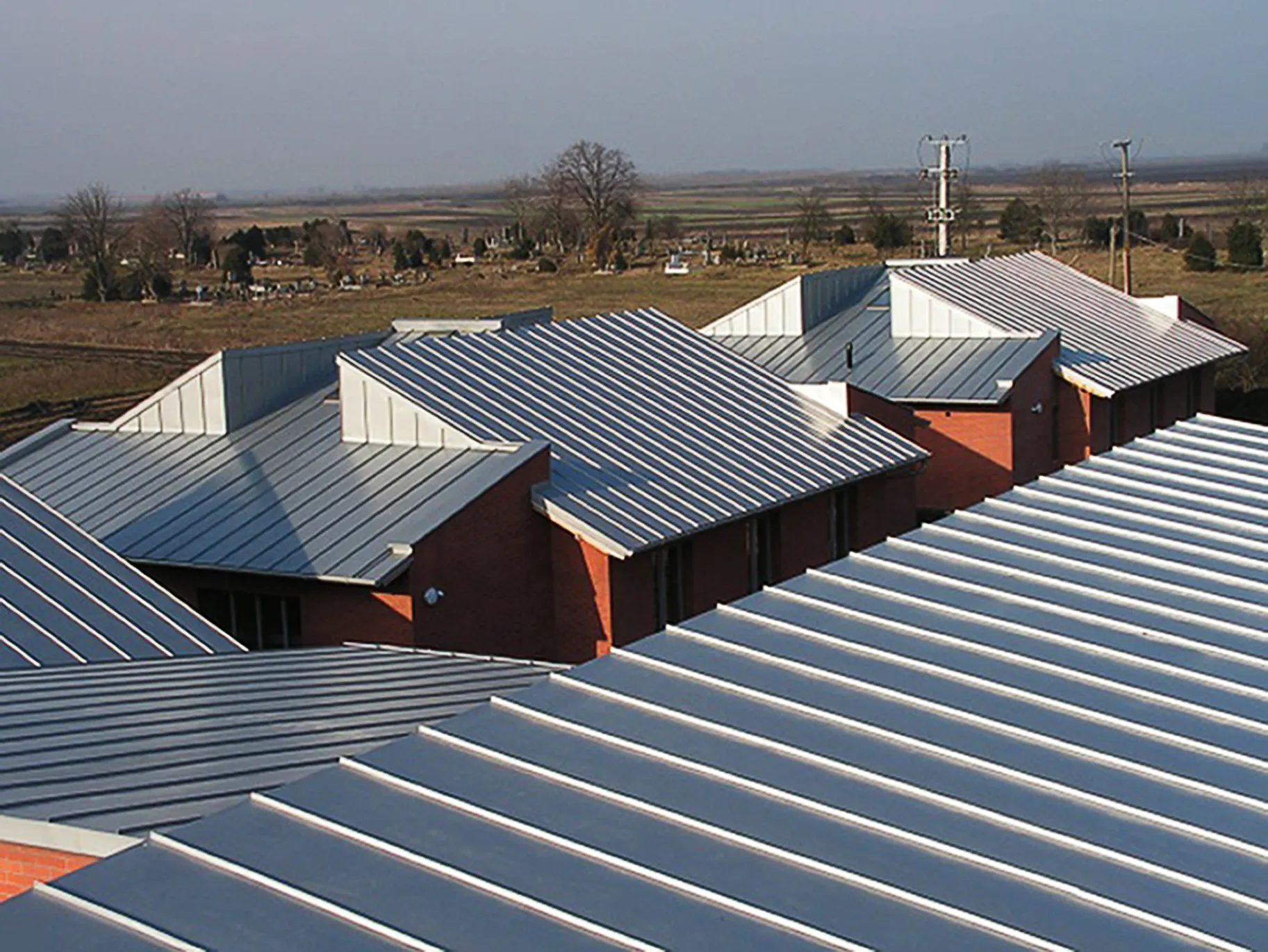
Zinc metal roofing is unlike anything else. It looks fantastic and highlights the merits of a structure’s architecture.
Compared to other metal roofing materials, it uses relatively little energy.
Zinc has a long lifespan and requires minimal maintenance and replacement.
It’s also light, which means it won’t strain the structure. It is inherently soft, allowing constructors to use hand tools with ease.
However, specialist advice is essential if any shape adjustments are required. Zinc is a strong, long-lasting, and inexpensive substance.
Although zinc is well-known for its benefits and excellent characteristics, there are a few things to consider when utilizing it.
Furthermore, when exposed to dampness, this roofing is prone to corrosion from the underside, which must be factored into the design.
However, this only occurs when the environment isn’t conducive to forming a patina.
Also, It is appropriate for schools, residential buildings, church buildings, and commercial structures.
Pros:
- Longevity: Can last over a century with minimal maintenance (source).
- Low Maintenance: Requires very little upkeep once installed (source).
- Self-Healing: Zinc has the ability to self-repair minor scratches and nicks over time (source).
- Corrosion Resistance: Develops a protective patina that prevents rust.
- Environmentally Friendly: Fully recyclable and has a lower environmental impact compared to some other metals (source).
Cons:
- Cost: Generally more expensive than many other roofing materials (source).
- Softness: More susceptible to damage from hail or falling debris due to its softer nature.
- Color Changes: The patina process changes the color of the roof over time, which might not be desirable for everyone.
Zinc roofing is an excellent choice for those looking for a durable, low-maintenance, and environmentally friendly roofing solution despite its higher cost and susceptibility to physical damage.
5. Lead Roofing
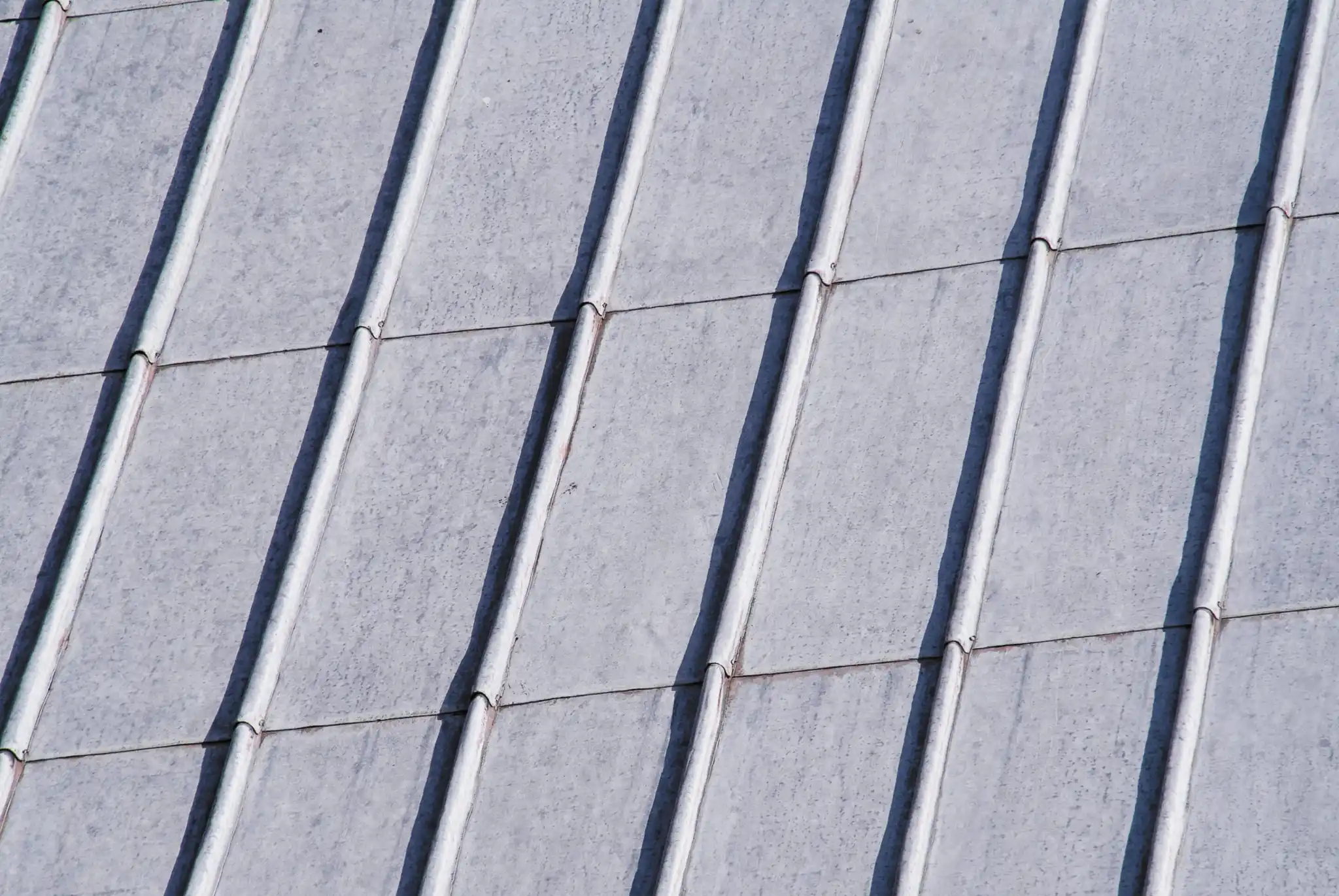
When it comes to roofing, lead materials have numerous benefits and drawbacks. Lead is one of the most durable metals on the planet.
It can also contract and expand in response to changing temperatures, adjusting to the building’s energy efficiency.
Lead can be molded into various shapes to fit different building designs and not catch fire during a severe thunderstorm.
It can, however, melt under excessive heat, as the terrible event on York Minster’s South Transept demonstrated.
It is more resistant to air corrosion than other metal roofing materials, allowing it to survive longer.
It’s also resistant to radiation and sound, which are critical for a building’s structural stability.
However, lead roofing has several acknowledged drawbacks, including being costly, heavy, and hazardous when it breaks down over time.
Due to its high scrap value, lead is also vulnerable to theft. Lead is one of the different types of metal roofing, and it can benefit industrial, religious, residential, and commercial roofing.
Pros:
- Durability: Extremely long-lasting, often outlasting the building it covers.
- Malleability: Easily shaped to fit complex roof structures and details (source).
- Watertight: Excellent at creating watertight seals preventing leaks.
- Corrosion Resistance: Naturally resistant to corrosion, making it ideal for harsh weather conditions (source).
Cons:
- Health Concerns: Lead is toxic, posing health risks during installation and if not properly managed (source).
- Environmental Impact: Lead is not environmentally friendly and can contaminate soil and water.
- Cost: High initial cost due to material and specialized installation requirements.
- Weight: Heavier than many other roofing materials, potentially requiring additional structural support.
Lead roofing is a durable and highly effective option for creating watertight seals and fitting complex roof designs.
However, its use is limited today due to health and environmental concerns, as well as its higher cost and weight.
6. Tin Roofing
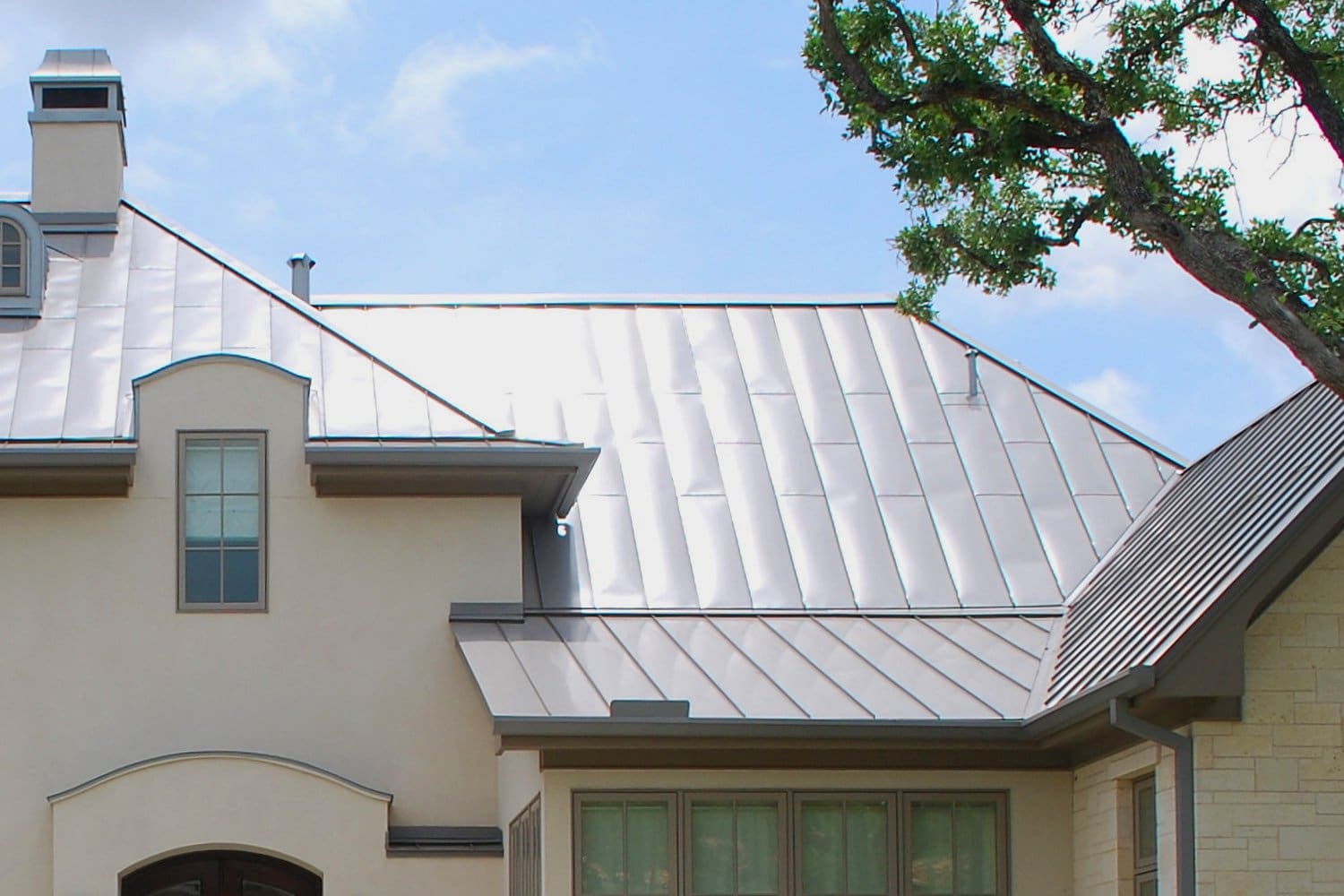
Tin roofing is rolled steel with a tin coating. The tin is chemically bonded to the steel, making the roof more durable and crack-resistant.
Metal roofing first appeared in the 1700s, though tin roofs did not become popular in the United States until the late 1800s.
Tin became a popular roofing material due to its small weight, making it simple to transport and install.
However, about a century ago, its usage in roofing began to wane drastically.
Tin was gradually phased out in favor of aluminum, eventually rendering it obsolete. Today, tin roofs are uncommon.
Pros:
- Affordability: Generally less expensive than other metal roofing options (source).
- Lightweight: Easier to handle and install, requiring less structural support.
- Rustic Appeal: Offers a classic, vintage look that can enhance the aesthetic of certain architectural styles.
- Ease of Installation: Simpler to install compared to some other metal roofing materials (source).
Cons:
- Durability: Less durable than other metals like steel or aluminum and may require more frequent maintenance.
- Corrosion: Prone to rust if not properly maintained or coated, especially in humid or coastal areas (source).
- Noise: Can be noisier during rain or hailstorms compared to other roofing materials.
- Limited Availability: Less commonly used today, which might make sourcing materials and skilled installers more challenging.
Tin roofing can be a cost-effective and aesthetically pleasing option, particularly for those seeking a rustic look.
However, it may require more maintenance and is less durable compared to other metal roofing options.







